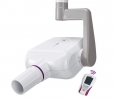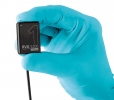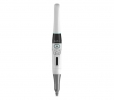It is important to always remember that when we talk to patients about their dental treatment, it often seems like we are speaking a different language and many things can be lost in translation. When incorporating digital photography in your conversation with your patients, the photos speak louder than words. The photos can do all the talking for you.
First, you need a good-quality camera, some lip/cheek retractors and a good set of occlusal mirrors. I prefer two people in the photography process: one who operates the camera to get the shot and the other to assist. It can be done with just one operator but I find the pictures to turn out better with two people taking them.
Set up your room with a set of lip/cheek retractors, an occlusal mirror and a buccal mirror (the buccal mirror is not critical but I prefer it for my buccal shots) have the suction ready and the air water tip. When opening up your sterile mirrors I usually take a 2x2 with alcohol and wipe the surface clean. There are usually some smears or particles on the mirror you can’t see with the naked eye but when you download your photos you can see watermarks and it can ruin your picture.
The type of photos you take depends on what type of dentistry you want to do. Regular intraoral of single tooth is great for only doing one tooth at a time, but it still doesn’t give the full effect of a full occlusal. It is kind of like if you’re selling a car but only showing the client the right front tire. My typical photo series is a portrait smiling and at rest, side profile with hair off the neck (to view posture and chin proportion), close-up smile shot, retracted buccal right and left (you should be getting as far back as the second molars in this picture and the buccal mirror can really help retract the cheek), retracted smile open and biting down (make sure you can see the whole tooth from top to bottom including all recession/bone loss in the biting down photo), and upper and lower occlusal. I always say things do not need to be cookie cutter for each patient; if I see something else worth taking I just take it.
Explain to the patient why the photos are being taken. This doesn’t need to be a long, drawn-out conversation; it can go something like, “we are going to start our photo series. It goes very quickly. We use these photos for our records and to help with diagnosis.” It is also important to have a conversation with them about any areas of sensitivity they may have. Inform them you will be blowing some air on the teeth and the mirror. If they were sensitive, I would avoid the air at this time.
The patient will be participating in the photos. Place the retractors around the lips and then have them grab to hold. The operator with the camera typically stands on the left side and the operator holding mirrors and controlling the air stands on the right side of the patient. The photographer should only be focusing on getting the picture taken, while the assistant makes sure the retractors are in proper place and the teeth are dry with no saliva bubbles on the teeth (saliva bubbles can block decay in the photo). Remember to blow air slowly in case the patient is sensitive.
When taking lower occlusal photos, have the patient hold the retractors vertically. This gives you more room to place the larger side of the mirror to make taking the photo easier You should not move to the patient—the patient should move to you. Turn their head, chin up/chin down and move the chair. I spent many years trying to get the best picture by moving to the patient and it is just uncomfortable for everyone. Brace your leg on the patient’s chair for support. Always get the second molars in your occlusal pictures. Those teeth are almost always previously restored and missing that can cost you the price of a crown.
If you take portraits you will want to do this first in the series so their lips aren’t stretched and red from the retractors.
Once you have your photo series, I recommend cropping and rotating right away. You will not believe how many times I have sat down with female patients and the first thing they point out is there hair on their lip—at that moment, they don’t even see their teeth. Just crop out the upper lip and anything else you don’t want in the photo. Rotate anything that was taken on the mirrors. I suggest everyone in the practice take and crop all photos exactly the same. There is nothing worse than showing a patient their teeth and pointing something out that is actually on the other side of their mouth. You can lose credibility really quick!
Once the photos are cropped, go ahead and print them out. I like to have the photos up on a computer or television screen as well before I sit down with the patient to discuss treatment. The patients often say, “are those my teeth?!” They really have no idea what things look like once you peel the layers back and look close up. It is very powerful and they can usually see right away what is wrong with their teeth. Staple the photos to the treatment plan, draw and write on them or, if you have time, create a small PowerPoint to send home with them. That will really give them a “wow” factor. Remember to always speak in a patients’ language to what they understand and these photos will help with the rest.




